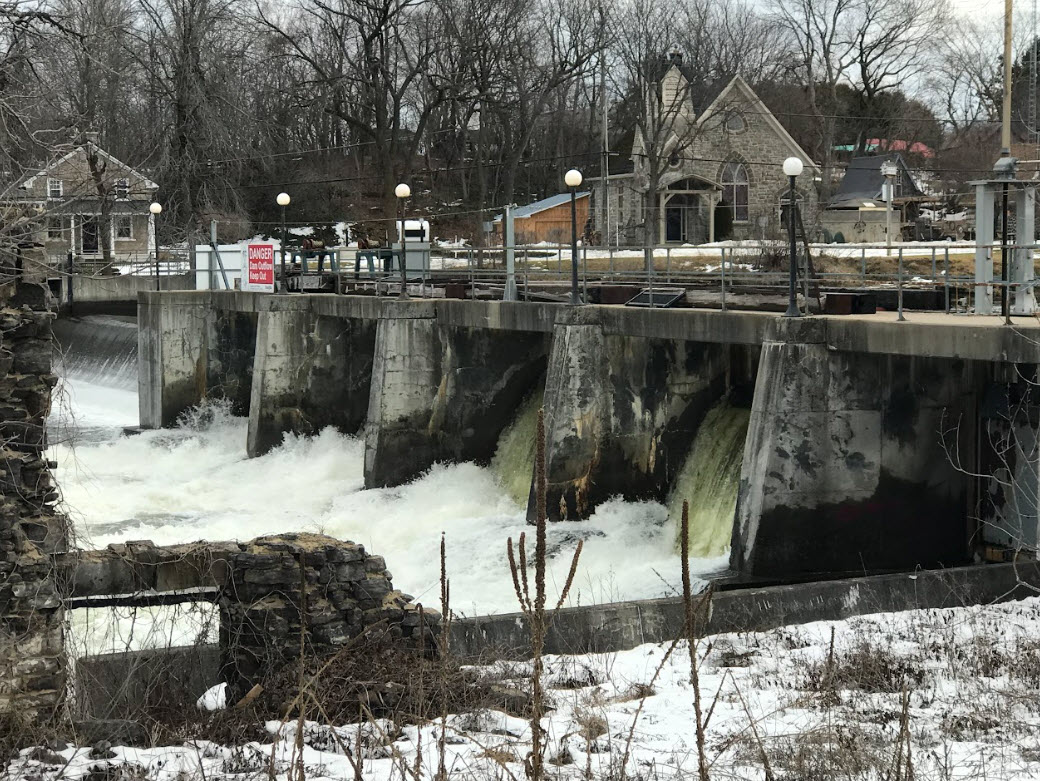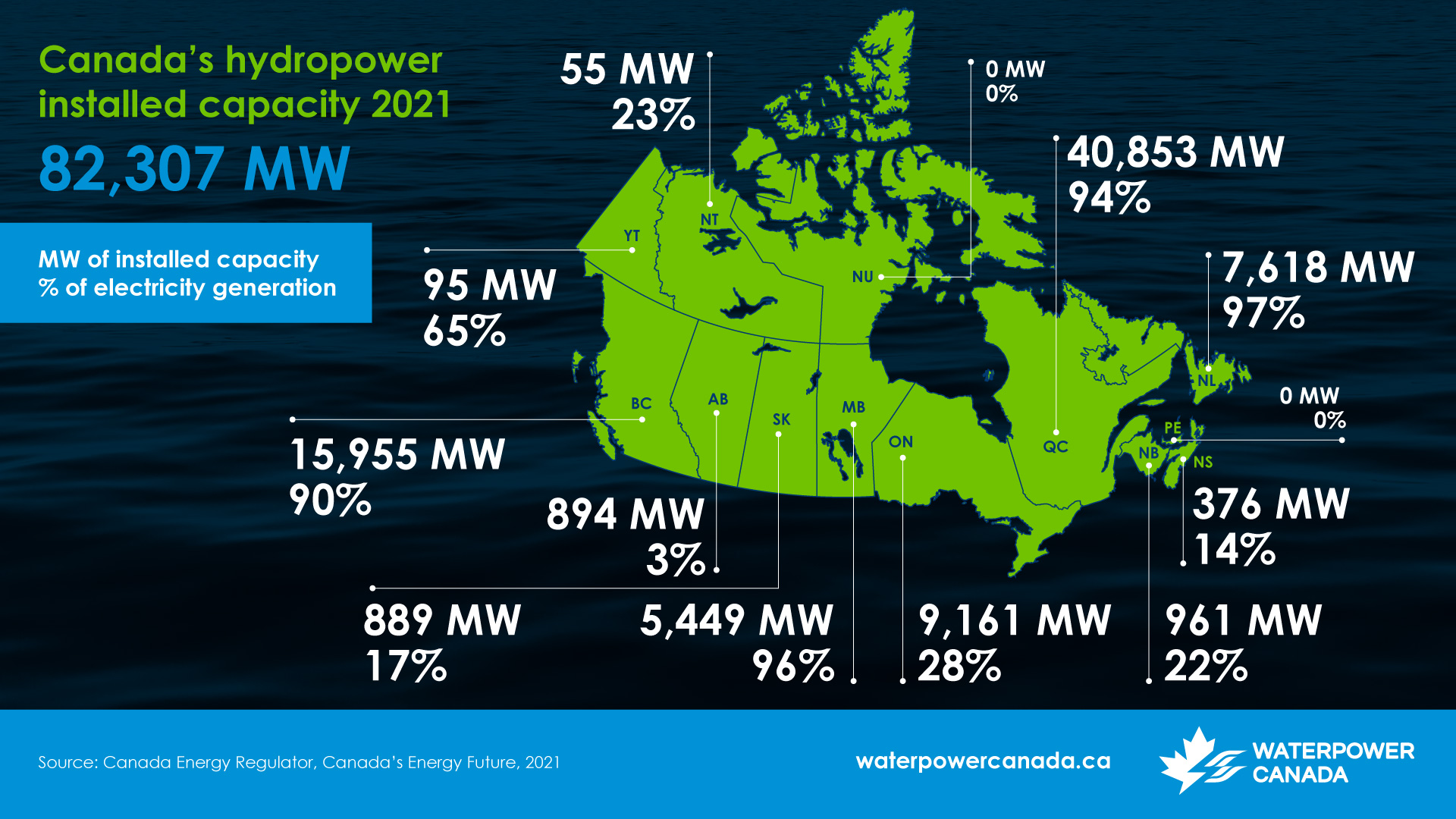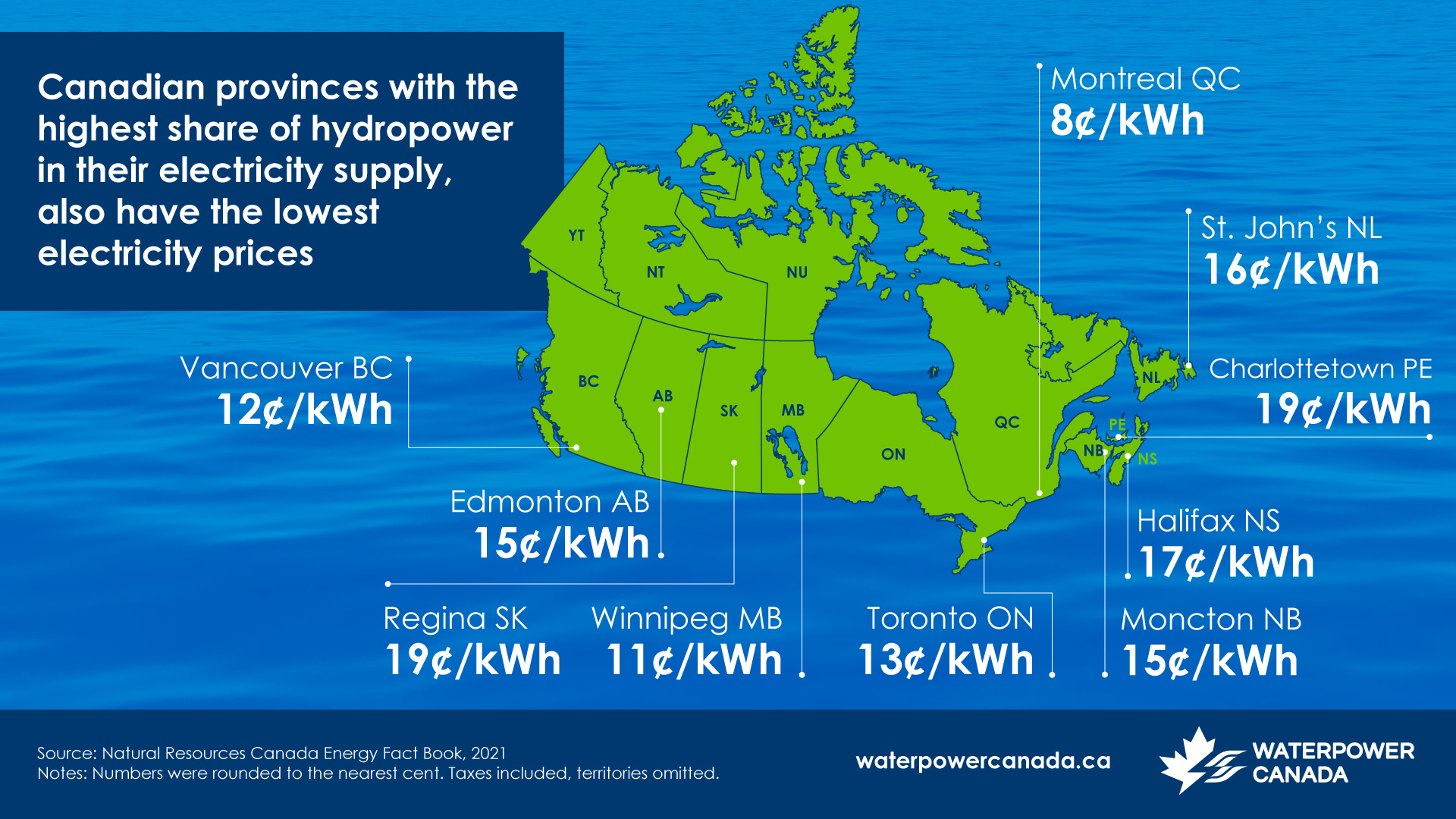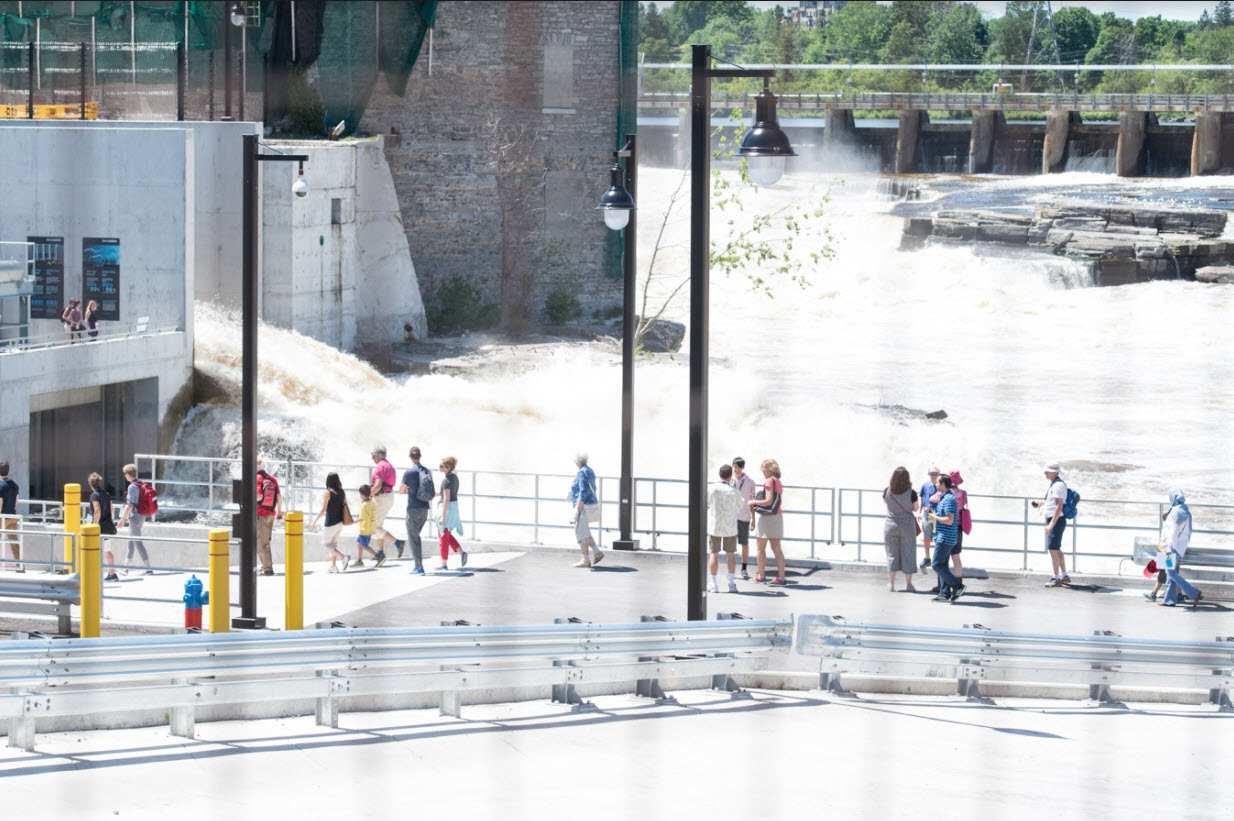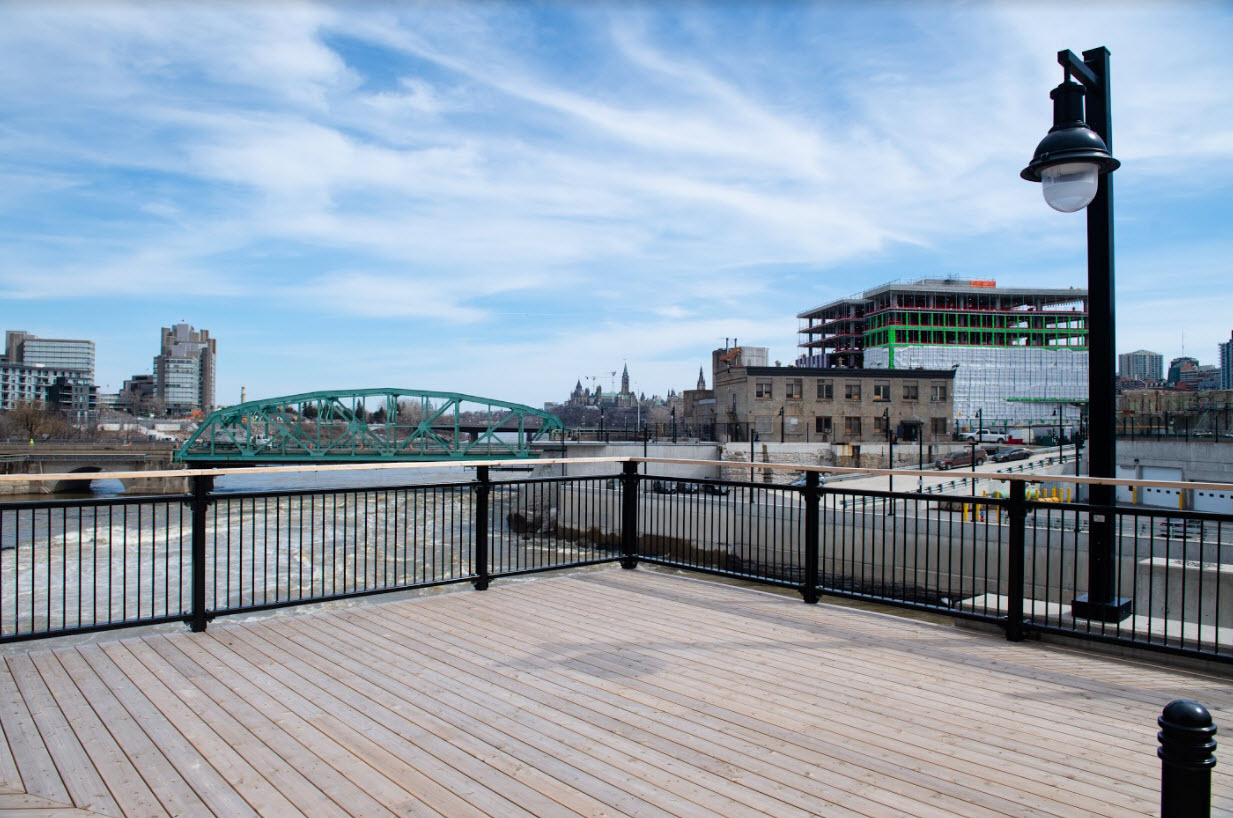Hydropower is the dominant source of renewable energy in Canada, powering six out of ten homes and businesses.
Because Canada is a water-rich country, it’s not surprising that water is our most abundant renewable resource; providing more than 60 per cent of our country’s total electricity, and making up 90 per cent of Canada’s renewable electricity output. The installed capacity will soon exceed 85,000 megawatts (MW).
Hydropower produces no air pollutants and has ultra-low greenhouse gas emissions – especially for those stations that are run-of-the-river operations. Overall, hydroelectric facilities can reliably generate power 24/7 all year long and are a cost-effective long-term investment. Not to mention that with proper maintenance, they can be extended far beyond 100 years.
As Waterpower Canada points out, “water is not consumed, depleted or wasted in the process” but rather replenished at a rate that is equal to or faster than the rate at which it is used.
Hydro - what’s in a name?
Canadians have a long and proud history with hydroelectricity, which is why ‘hydro’ is often a part of Canadian utility company names, but some residents are surprised to learn just how much hydroelectric power Hydro Ottawa generates.
In fact, Canada’s oldest hydroelectric generating station that’s still in operation today was commissioned right here in the nation’s capital in 1891. Owned by Hydro Ottawa, Generating Station No. 2 is located on Victoria Island in downtown Ottawa; a stone’s-throw away from Parliament.
The heritage-designated station, along with five others built over the last century at Chaudière Falls (including the Ring Dam), has been providing clean, renewable electricity to the nation’s capital for more than 130 years.
And just recently, in December 2022, Hydro Ottawa (through our affiliate, Portage Power) got a little greener (bluer?) when we acquired two additional hydroelectric generating stations located on the Mississippi River in the Ottawa Valley.
Our (new to us) Galetta Falls Generating Station in nearby Almonte was built in 1907 and underwent an extensive refurbishment in 1999, while the Appleton station was built in 1994 next to the site of an old mill that was in operation in the 1850s in the Town of Appleton. Both facilities are EcoLogo certified by the Environmental Choice Program and, together, have an installed capacity of more than three megawatts.
In total, these stations join our already impressive fleet of 16 run-of-the-river hydroelectric facilities in Ontario, Quebec and New York State that collectively produce more than 115 MW of electricity. With these additions, that output will now increase to 118 MW and enough to power 98,000 homes with clean energy every year.
Waterworld
We are moving away from the fossil-fueled industrial age of the 20th Century towards a net-zero revolution for the 21st Century. By 2035, the Government of Canada has committed that all electricity in the country will be produced with zero emissions. Canada’s electricity is already more than 80 per cent emissions free (the cleanest of all G20 nations) – but there’s still work to do in order to reach our net-zero target.
To reduce Canada’s emissions of greenhouse gasses that cause climate change, we must increase the amount of zero-emissions electricity we produce and strategically reduce our reliance on fossil fuels in the transportation, industrial and building sectors. Is water Canada’s natural advantage?
Waterpower Canada, the national non-profit trade association dedicated to representing the waterpower industry, believes that refurbishing existing facilities can increase generation by a further 15,000 MW or more. With Canada’s abundance of untapped waterpower resources, it projects that it could even double existing production.
Contrary to popular opinion, Canadian hydropower is cost-competitive, which helps keep rates low for customers. In fact, provinces with the highest hydropower installed capacity tend to have the lowest electricity costs.
Canada’s waterpower and a net-zero future
Canada's waterpower industry could play a crucial role in achieving a net-zero future by providing a reliable and renewable source of electricity generation. It’s why we’re such fans. Here are some of the benefits:
- Waterpower is a clean and renewable source of energy that produces very little greenhouse gas emissions. This makes it an ideal energy source for achieving net-zero emissions.
- Waterpower is one of the most cost-effective sources of electricity generation in Canada. This is because the cost of producing hydroelectricity is relatively low compared to other renewable energy sources.
- Hydroelectric facilities can also provide energy storage by using excess energy to pump water into a reservoir. This water can then be released later to generate electricity during periods of high demand or when other energy sources are unavailable.
- Hydroelectricity can help stabilize the grid by providing a constant and predictable source of electricity. This can help balance intermittent sources of energy like wind and solar power.
- The waterpower industry is a major employer in Canada, providing nearly 49,000 jobs in areas such as engineering, construction, and operations.
Visit our historic site
For more than a century, one of our National Capital Region’s most beautiful sites was industrialized, fenced off, and hidden from view. That all changed in 2018 when Hydro Ottawa opened the historic Chaudière Falls to the public. While our latest generating station isn’t open for tours at this time, we have created a public space that can be enjoyed year round.
With stunning viewing platforms of the falls and Ring Dam, a pedestrian bridge across the intake canal and a revitalized park space that pays homage to our area’s Indigenous roots and industrialist past, we also restored two of Chaudière Falls’ oldest buildings (once part of J.R. Booth’s lumber empire) that survived the Great Fire of 1900.
With the warmer weather, now is the perfect time to take in the scenic views and enjoy the park space that is home to Ottawa’s clean, sustainable past and future.
